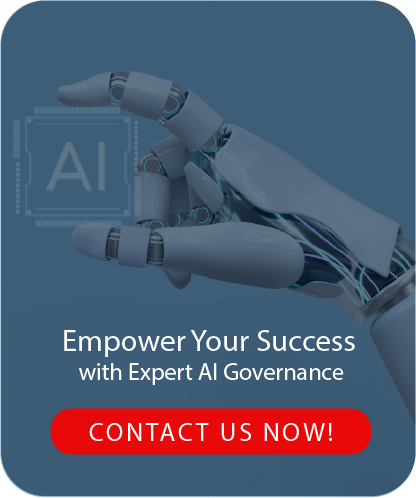Are you frustrated by the challenge of implementing AI in your organization? You're not alone. While 72% of companies now use some form of AI, less than half successfully bring their AI projects to production. Let's solve this problem together.
In this article, we present a framework for applying AI in the enterprise a practical, strategic approach to help organizations move from experimentation to execution. Whether you're a business leader, technology director, or simply someone interested in the transformative potential of AI, this guide will provide you with the knowledge needed to succeed.
Ready to transform your business with AI? Contact us to discover how our expert team can help you implement an effective AI strategy tailored to your unique needs.
Understanding Enterprise AI in 2025
Enterprise AI refers to the strategic integration of artificial intelligence technologies across multiple levels of an organization. Unlike basic or narrow AI tools that handle simple, repetitive tasks, enterprise AI is designed to:
- Automate complex workflows across different departments
- Support diverse domains and business functions
- Drive significant improvements in organizational efficiency
- Integrate seamlessly with existing business systems
The right AI implementation can streamline operations, unlock new opportunities, and significantly reduce costs. But achieving these benefits requires a thoughtful, structured approach a framework for applying AI in the enterprise that ensures scalability, alignment with business goals, and long-term success.

The 5-Step Framework for Enterprise AI Implementation
Based on our analysis of successful AI implementations, we've developed a comprehensive framework that any organization can follow. This approach ensures that your AI initiatives align with business objectives while minimizing risks.
1. Identify Business Needs and Opportunities
The first step is to identifying business needs that require high cognitive effort or complex decision-making. These are excellent candidates for AI applications and form the foundation of a framework for applying AI in the enterprise.
Practical approach:
- Focus on areas with frequent human intervention
- Look for repetitive processes that consume significant resources
- Identify pain points in customer and employee experiences
- Consider where cognitive tasks like language processing could be automated
Examples of high-potential AI applications include:
- Customer service automation through NLP
- Document analysis and processing
- Automated data entry and records updating
- Image and video analysis for quality control
2. Start with Small, Meaningful Outcomes
Many organizations fail by attempting to implement large-scale AI solutions immediately. Instead, a successful strategy based on a framework for applying AI in the enterprise involves:
- Defining a pilot project with a limited scope
- Ensuring technical feasibility before scaling
- Creating measurable success criteria
- Focusing on demonstrating value quickly
Pro tip: By limiting your initial outcome, technical feasibility becomes more manageable, and it's easier to measure success milestones. Start with a specific department or function rather than enterprise-wide implementation.
Is your enterprise ready for AI transformation? Take the first step today by contacting our team for a personalized AI readiness assessment.
3. Assess and Organize Your Data
AI implementation depends on high-quality data in sufficient quantities. As part of a framework for applying AI in the enterprise, it’s essential to begin with a strong data foundation. Before proceeding:
- Evaluate your current data storage and infrastructure
- Ensure data is well-formatted and properly represents the problem space
- Consider cloud infrastructure for better data accessibility
- Develop clear metadata and documentation
Did you know? Without high-quality, accessible data, even the most sophisticated AI models will fail to produce accurate results.
4. Select and Explore Appropriate Algorithms
Unlike traditional software development, AI implementation requires:
- Identifying appropriate inputs and outputs
- Exploring multiple algorithms for your specific use case
- Spending significant time evaluating models rather than writing explicit instructions
- Considering open-source technologies for cost and maturity benefits
Common technologies to consider include:
- Natural language processing
- Machine learning and deep learning
- Computer vision
- Predictive analytics
5. Continuously Improve and Iterate
AI models constantly evolve as they encounter new data. As part of a framework for applying AI in the enterprise, your implementation plan should include:
- Time and resources for ongoing model refinement
- Processes for collecting more training data, especially for edge cases
- Regular evaluation against key performance metrics
- Mechanisms for incorporating real-world feedback
Remember: Each successful pilot becomes a blueprint for wider enterprise adoption. The lessons learned from initial implementations will help you overcome organizational constraints and scale more effectively.
Key Components for Successful Enterprise AI Implementation
Beyond the framework steps, four critical components must be in place for any enterprise AI implementation:
- Quality Data Infrastructure - This includes structured databases or unstructured files that the AI system will use to perform its tasks.
- Appropriate Machine Learning Systems - AI applications typically run on platforms like Azure, AWS, or other specialized environments.
- Sufficient Computing Power - AI systems require substantial processing capability, especially graphics processing units (GPUs).
- Robust Security and Governance - A sound AI policy and strong cybersecurity measures are essential for successful implementation.
Industry-Specific Applications of AI Frameworks

Different industries are leveraging enterprise AI in unique ways:
- Retail: Inventory management, price optimization, and demand forecasting
- Manufacturing: Supply chain automation, quality control, and production optimization
- Healthcare: Disease diagnosis, treatment planning, and clinical decision support
- Banking: Research analysis, financial modeling, risk management, and compliance
- Logistics: Maintenance prediction, order processing, and route optimization
Overcoming Common Enterprise AI Challenges
Implementing AI across an organization presents several challenges:
Integration Complexities
Partner with experienced AI vendors who offer pre-built integrations with your tech stack and provide personalized implementation support.
Security Concerns
Choose AI solutions built with security in mind that comply with global industry regulations like SOC-2 and NIST AI Risk Management Framework.
Access Management
Implement granular control over user access to ensure data privacy and compliance with regulations like GDPR and CCPA.
Employee Adoption
Provide comprehensive training, choose intuitive AI solutions, and develop role-specific campaigns to encourage broader buy-in.
Ready to implement an AI framework in your enterprise? Contact our team today to discuss your specific needs and challenges.
The Future of Enterprise AI
As AI technology continues to evolve rapidly, organizations that establish a framework for applying AI in the enterprise now will be best positioned to maintain their competitive edge. A reliable AI partner ensures your systems stay current, secure, and capable of handling increasingly complex tasks.
Remember that AI implementation is an iterative process. Each step in a framework for applying AI in the enterprise should be repeated for each business challenge you're trying to solve. This approach will help your organization understand and implement AI that truly fits your unique needs.
FAQ
What is a framework for applying AI in the enterprise?
It’s a structured approach to strategically implement AI across your organization—ensuring alignment with business goals, scalability, and long-term success.
Why do many AI projects fail in enterprise settings?
Common reasons include poor data quality, lack of clear goals, inadequate infrastructure, and insufficient employee training.
What are the first steps to apply AI in a business?
Start by identifying high-impact business needs, launching a small pilot project, and ensuring data readiness.
Do I need a large team to implement enterprise AI?
Not necessarily. With the right framework and expert support, even lean teams can achieve strong AI outcomes.
How can my organization benefit from this framework?
It helps streamline operations, reduce costs, and unlock data-driven decision-making across departments.







